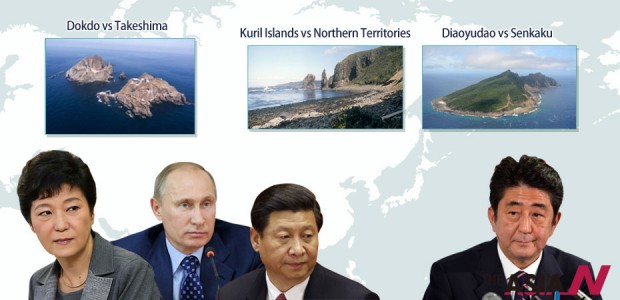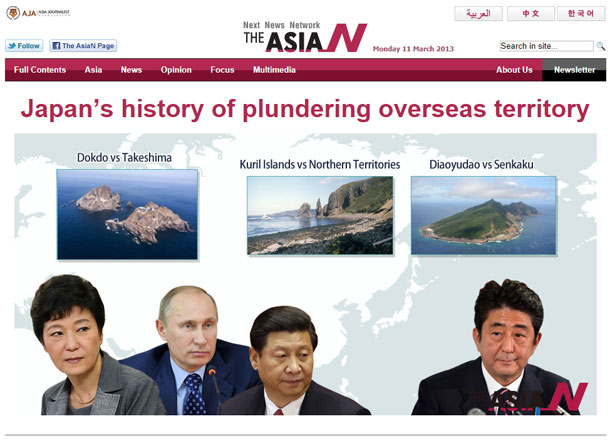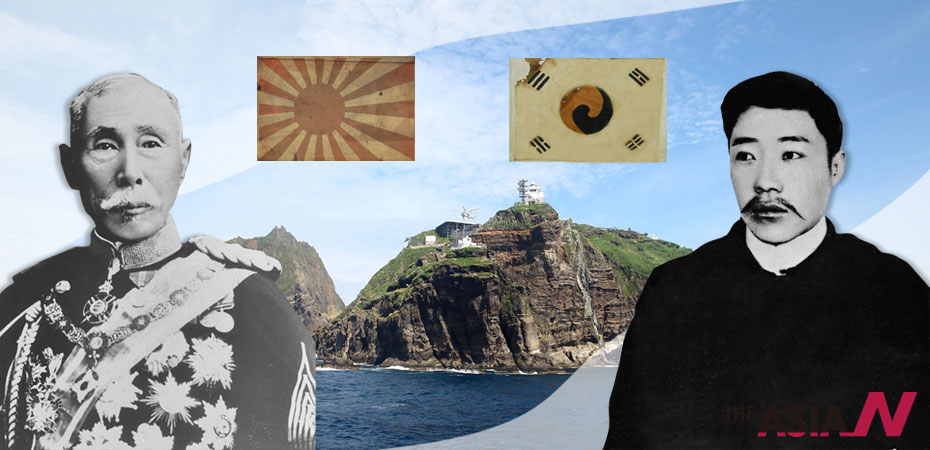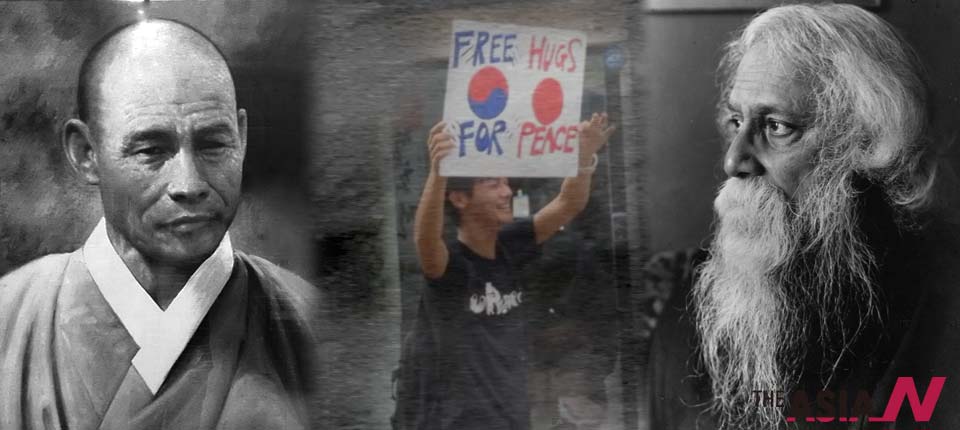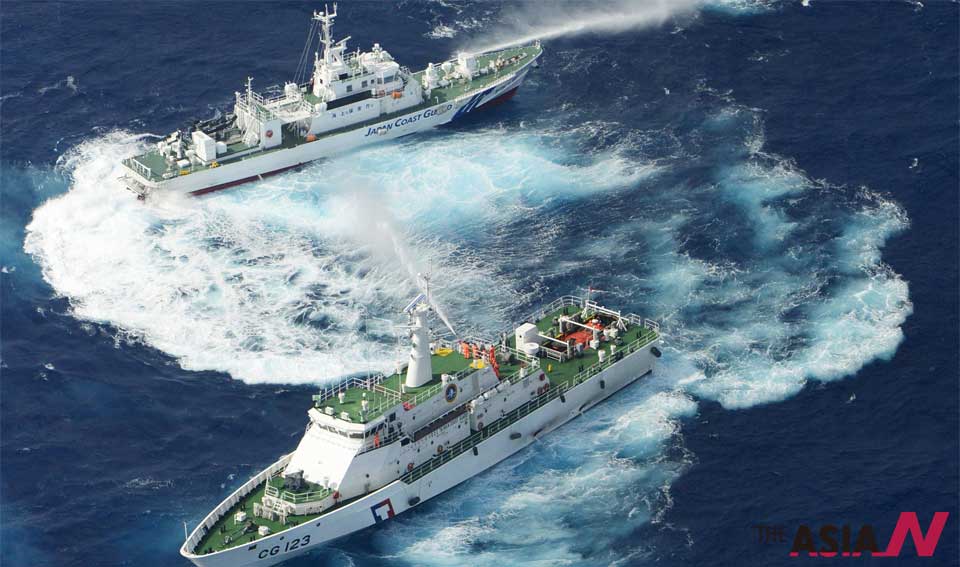
Japan’s history of plundering overseas territory
Joint Project between the Northeast Asian History Foundation and The AsiaN
![]()
*Editor’s Note: Security in East Asia is swaying in a rough sea. North Korea’s nuclear crisis has been highly elated amid existing territorial disputes and deep-rooted conflicts between nations in the region. South Korea, China and Japan, the countries directly involved, are all looking for a new order in the process of power shift. In search of sensible solutions for historical conflicts in East Asia, The AsiaN and the Northeast Asian History Foundation have jointly featured a column series by experts on current issues in East Asia. The contribution series of in-depth analyses, insights and strategic solutions will be provided in four languages including English, Korean, Chinese and Arabic.
[Expert Column Series on Current Issues in East Asia] ⑥ Dokdo is Dokdo: Japan’s history of plundering overseas territory
On February 28, the Asia Journalist Association held a seminar on the “Asian media’s role for the peaceful resolution of territorial disputes” at the Northeast Asian History Foundation’s conference room. Korean and international journalists and scholars, some from the countries directly involved in territorial disputes, gave presentations and participated in impassioned discussions.
The convening of this group of participants was meaningful as such a gathering of civilians from nations involved with territorial disputes as well as neighboring countries such as Korea, China, Japan, Turkey, Austria, etc. in such a friendly setting has been unprecedented. The officials of the involved governments have unfolded diplomatic wars, but there is no record of so-called negotiation tables. Meeting and communication can foster the motivation to create peaceful solutions.
The starting point of problems in the territorial disputes between Korea and Japan, China and Japan, Russia and Japan lies with Japan. In harsher words, Japan is Northeast Asia’s troublemaker. As Prime Minister Abe came to office, he publicly made the ‘Office of Planning and Coordination for Measures on Territory and Sovereignty’ in the prime minister’s Cabinet Secretariat, the secret organization in the past, which was in charge of territorial issues. The organization deals with issues concerning the Dokdo islands, Senkaku islands, and the four Kuril Islands. The Cabinet’s Secretariat is the department that directly supports and aids the prime minister, which is equivalent to the Presidential Secretariat in Korea.
Further, the local government of Shimane Prefecture organized “Takeshima Day” on February 22, and for the first time, an official from the central government, Shimajiri Aiko, the administrative official (vice-minister level) from the cabinet who was in charge of maritime policy and territorial issues were sent to attend.
Japan’s belligerence and aggressiveness goes back to the beginning of the 3rd century. Now, as we are in the 21st century, these tendencies are 1,800 years old. The first encounter with ancient Japan described in Korean history books is the cultural exchange of Baekche scholar Wang-in teaching the Thousand-Character Classic and The Analects of Confucius in Japan. However, according to Japanese history books, Korea’s first appearance is with the story of Empress Jingu leading the army and carrying out the conquest of the three kingdoms.
As recorded on the Goguryeo’s Great King Gwanggaeto’s tomb epitaph, Japan’s name transformed from “Japanese,” ” Japanese pirates,” and then “Japanese raiders.” The Japanese did not only invade the Korean peninsula, but also expanded their act of aggression to part of the east coast of the Chinese continent, Taiwan, Ryuku (Okinawa) and Southeast Asia.
Throughout history, Japan continued its quest for expansion: invading Korea more than 300 times and then later started the Imjin War under the philosophy of the ‘Seikaron,’ began the Greater East Asia War under the premises of the ‘Greater East Asia Co-prosperity,’ and then finally invaded Hawaii. The Japanese imperialists’ thirst of land expansion did not come to an end until the end of World War II.
Among Japan’s conquered lands was Korea and Dokdo is a symbol of that conquest. Dokdo is indisputably Korean land in a historical and geographical sense as well as by international law. Despite these facts, Japan continues to provoke Korea like the waves crashing on Dokdo’s rock face.
In the beginning of the Chosun Dynasty, the Repatriation Policy was implemented (1417) to protect the inhabitants of Ulleungdo from Japanese who were plundering and raiding the island. However, Japan gave its fishermen a license to cross the sea and thus, they continued to attack the Korean fishermen. Also, in 1693, Chosun An Yong-bok and party were kidnapped to Oki Island, which led to the Ulleungdo border dispute (known as the Takeshima incident in Japan). We can see once again that Ulleungdo and Dokdo were Chosun’s territory as the Shogunate later decreed an order for Japanese not to cross the sea in 1696.
But, this changed again. During the Russo-Japanese War, the government recognized the importance of Ulleungdo and Dokdo. Shimane Prefecture wanted exclusive rights to catch the sea lions of Dokdo and thus, collaborated with the government and then named the Dokdo islands Takeshima, incorporated the islands into the its Prefecture and made this official through Prefectural Notice No. 40. Between 1904 and 1941, Japan caught more than 20,000 Dokdo sea lions causing them to be extinct. They mostly used the sea lions’ hide for military boots, backpacks, and military supplies. In 1910, Korea’s sovereignty was taken away by Japan.
Is the reason for Japan’s strong desire to plunder and take over the peninsula and continent because Japan is an island with frequent earthquakes and typhoons? Or it is just within their DNA?
As China emerged as one of the G2 nations, the U.S. is strengthening the Obama administration’s Asia focused policies through “the return to Asia” and “the rebalancing of Asia.” After Mao Zedong, the fifth generation of Chinese leadership is putting forth the political slogan “The Revival of the Chinese Nation” and steadily advancing as a strong military and economic power.
Japan, benefiting from the U.S.’s policy toward Asia, is acting as a loyal agent of the United States. Japan is using its naval power and its alliance with the U.S. not only to focus on strengthening its effective rule over the Diaoyu Islands (Japanese name: Senkaku Islands), but also to strategically bring up the Dokdo issue on a regular basis.
Han Yong-sup, professor at the Korea National Defense University, said, “If the Korea-U.S. alliance weakens, and the United States’ military force becomes weaker than the Chinese, there is a possibility that Japan will take up an even more resolute attitude toward Dokdo.” And, on these premises, he continued, “In order to defend not only Dokdo, but the seas surrounding Korea, it is important for Korea not only to strengthen its alliance with the U.S., but to build up its military force just as China and Japan are doing.”
In the end, the Dokdo issue is a matter of national power. Nonetheless Dokdo is still Dokdo. One other fact to be reminded is: Japan is Japan.



